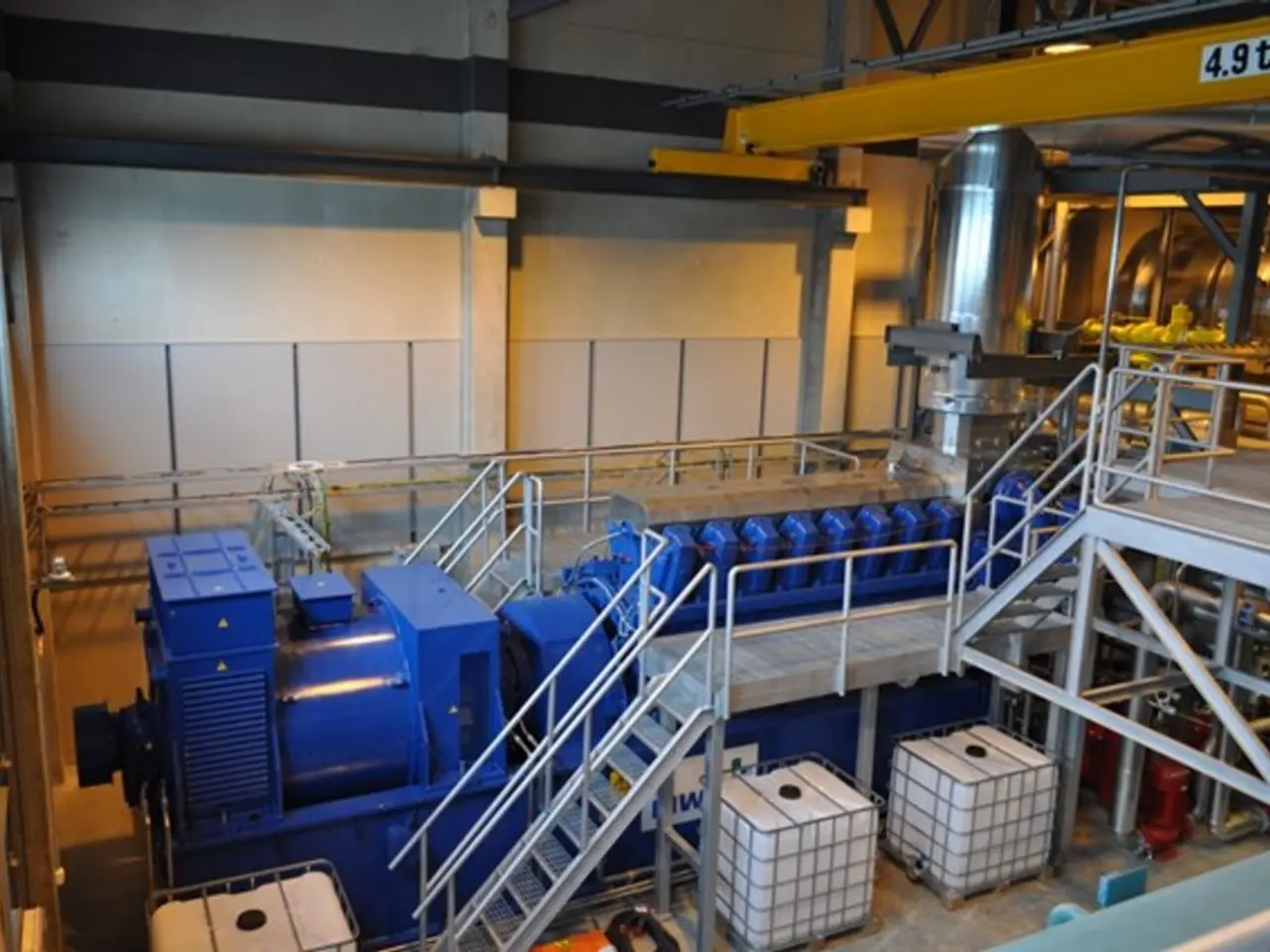Space-Based Solar Energy Harnessing for Interplanetary Expeditions
In the realm of renewable energy, Space-Based Solar Power (SBSP) is making significant strides, promising to revolutionise the way we power our planet and beyond. This groundbreaking technology focuses on photovoltaics, deployment mechanisms, and maintenance technologies to harness the sun's energy efficiently and sustainably.
Improvements in Photovoltaics
Space solar panels are being engineered to be up to ten times more efficient than their terrestrial counterparts, due to their operation outside Earth's atmosphere and unaffected by weather, night, or seasons. These high-efficiency solar arrays convert captured sunlight into electricity, which is then converted into microwaves for wireless transmission to Earth.
Deployment Mechanisms
SBSP satellites are targeted to orbit at geostationary altitudes around 36,000 km above Earth. This location allows continuous solar exposure and stable transmission angles for beaming energy down to Earth. Launch and deployment are supported by heavy-lift rockets such as China’s Long March-9, capable of delivering large payloads necessary for extensive solar arrays in orbit. Modular and scalable satellite designs are emerging to enable assembly and expansion of solar power stations in space, addressing the large scale required for meaningful power generation.
Maintenance and Operational Technologies
Given the complexity and high cost of space missions, research is ongoing into autonomous maintenance solutions, including robotic servicing or self-healing materials for solar panels to ensure long-term operation in harsh space environments. Wireless power transmission technology is being advanced with microwave beams, and Japan, for example, is pioneering ground-based receiving stations that convert beamed energy to usable power. Public-private partnerships and government-backed initiatives are accelerating R&D to address technical challenges and improve system robustness for continuous operation.
Beyond Earth's Orbit
Orbital solar farms offer a virtually limitless source of renewable energy that can supplement or replace traditional fossil fuel-based energy sources on Earth. These arrays can capture sunlight uninhibited by atmospheric interference and convert it into electricity, which is transmitted wirelessly to receiving stations on Earth or to spacecraft in need of power, using microwave or laser beams. Space-based solar power can supply energy to remote outposts and colonies outside Earth's orbit, with solar arrays in orbit around stars or planets serving as the primary energy generation hubs.
Unlocking the Potential of Lunar Resources
Solar power supports various exploration activities and resource utilization efforts on the Moon. Solar-powered rovers and drones can traverse the moon's surface, conducting scientific experiments and prospecting for resources. Advancing photovoltaics, solar sails, and space-based energy infrastructure is essential for reducing our carbon footprint, enabling long-duration space missions, and fostering the colonization of planets and more.
In conclusion, SBSP development is entering a growth phase driven by rising demand for clean energy, large government projects, and innovative startups aiming to overcome technical and cost barriers. These advancements collectively aim to realise the potential of SBSP as a reliable, continuous, and large-scale clean energy source that surpasses terrestrial solar capabilities.
- The space solar panels, designed to be more efficient than terrestrial ones, are being engineered to convert sunlight into electricity ten times more efficiently due to their operation outside Earth's atmosphere and absence of weather, night, or seasonal constraints.
- Space-based solar power satellites are planned to orbit at geostationary altitudes around 36,000 km above Earth, allowing for continuous solar exposure and stable transmission angles for beaming energy down to Earth.
- Launch and deployment of these satellites are supported by heavy-lift rockets such as China’s Long March-9, capable of delivering large payloads necessary for extended solar arrays in orbit.
- To enable assembly and expansion of solar power stations in space, modular and scalable satellite designs are emerging, addressing the large scale required for meaningful power generation.
- In view of the complexity and high cost of space missions, research is ongoing into autonomous maintenance solutions, such as robotic servicing or self-healing materials for solar panels to ensure long-term operation in harsh space environments.
- Japan is pioneering ground-based receiving stations that convert beamed energy from space solar panels into usable power, using wireless power transmission technology like microwave beams.
- Orbital solar farms offer a virtually limitless source of renewable energy, supplying energy to remote outposts beyond Earth and aiding colonization efforts, with solar arrays orbiting around stars or planets serving as primary energy generation hubs.
- Advancing solar power technologies, such as photovoltaics, solar sails, and space-based energy infrastructure, plays a crucial role in reducing carbon footprint, enabling long-duration space missions, and fostering the colonization of planets and beyond.




